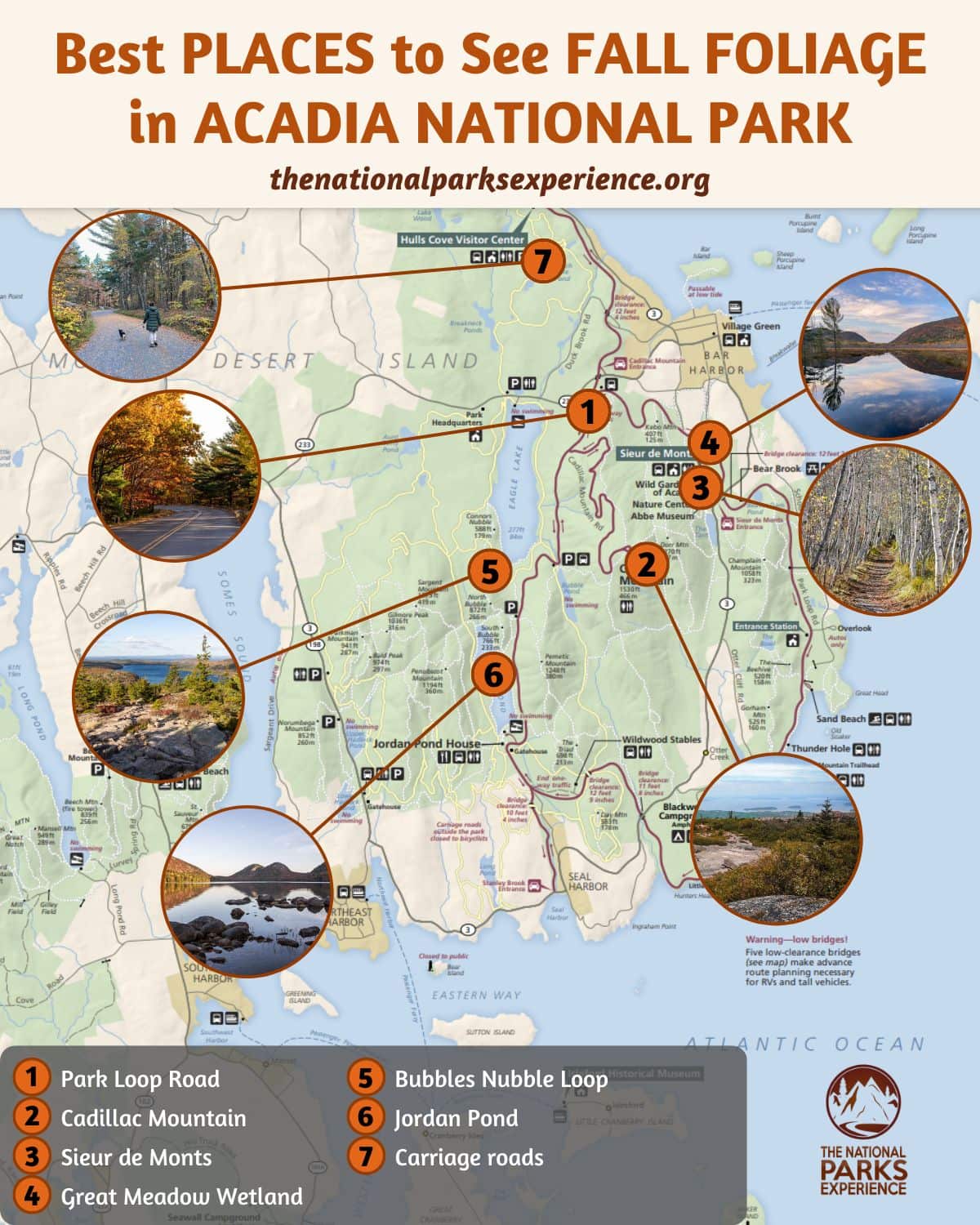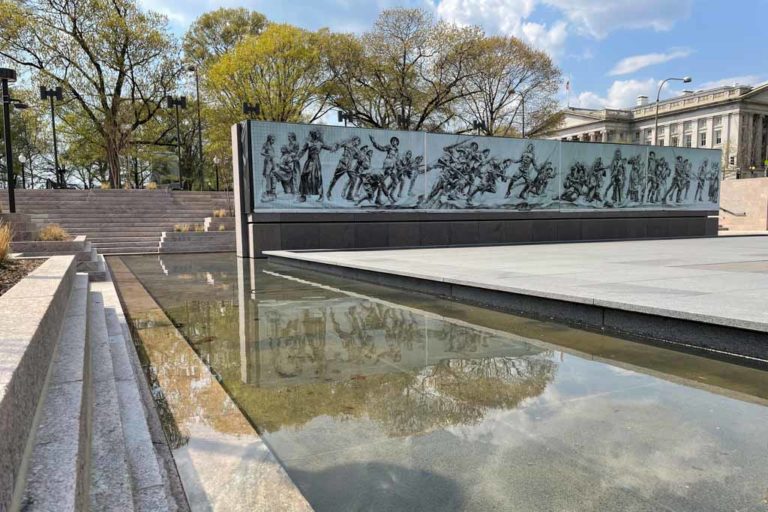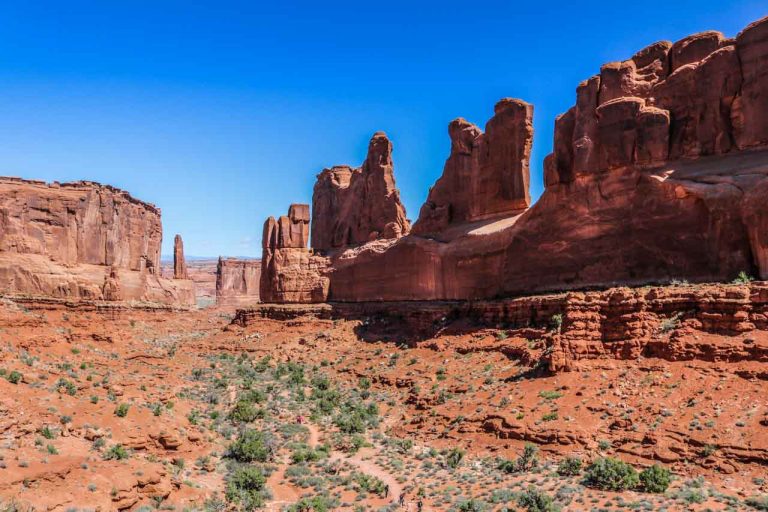Where to See Fall Colors in Acadia National Park
Come September, the forested hills and lakeshores of Acadia National Park slowly begin to exchange summer’s greens for the vibrant hues of autumn.
As temperatures slowly decrease and the days grow shorter, the park’s deciduous trees lose their chlorophyll, bringing out all kinds of yellow, orange, red, and scarlet.
By mid-October, the fall foliage in Acadia rivals that of any other place in the United States—a true autumn wonderland. Just like elsewhere in New England, Acadia National Park is a “leaf-peeping” paradise, an fall destination that attracts people from all over the world.
Below, you’ll find a bunch of information about the spectacular Acadia fall foliage. This includes the opportune time for peak foliage in Acadia, as well as the absolute best places to enjoy those brilliant fall colors in Acadia National Park.
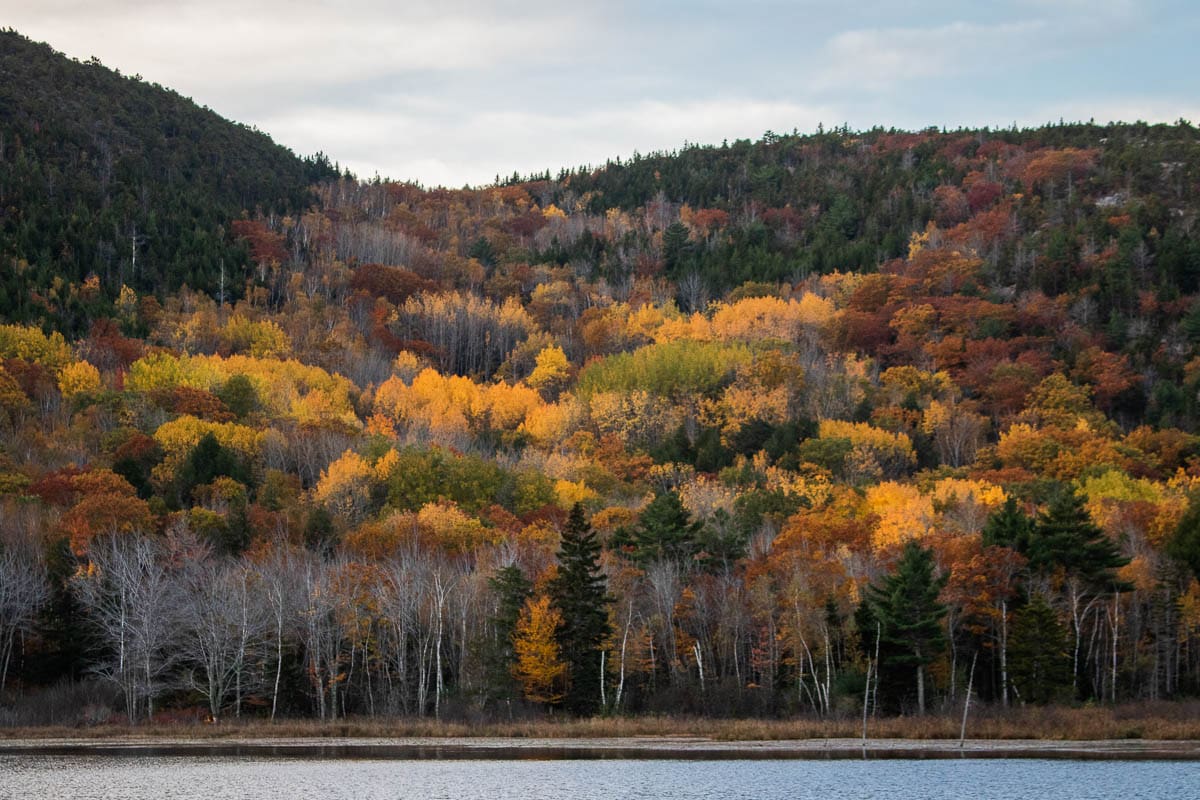
This blog post about the best places for fall colors in Acadia National Park contains affiliate links. You can read more about our Terms of Use / Disclosure here.
Acadia National Park Fall Foliage FAQs
Before we take a look at the top places for Acadia National Park fall colors, let’s first answer some common questions related to fall in the park.
Why Do Acadia National Park’s Trees Change Color in the Fall?
According to Visit Acadia, “each leaf of a deciduous tree (those that lose their leaves in the fall) contains green, red, orange and yellow pigments. Throughout the summer, the green is dominant due to chlorophyll production. As sunlight hours decrease in the fall, the green starts to disappear and the other pigments – red, orange, yellow, scarlet and purple – come alive!”
So essentially, the shorter the days get during fall, the more chlorophyll production slows down. As chlorophyll reduces, so do the vibrant greens of the leaves. Without the green, the leaves’ other colors become visible.
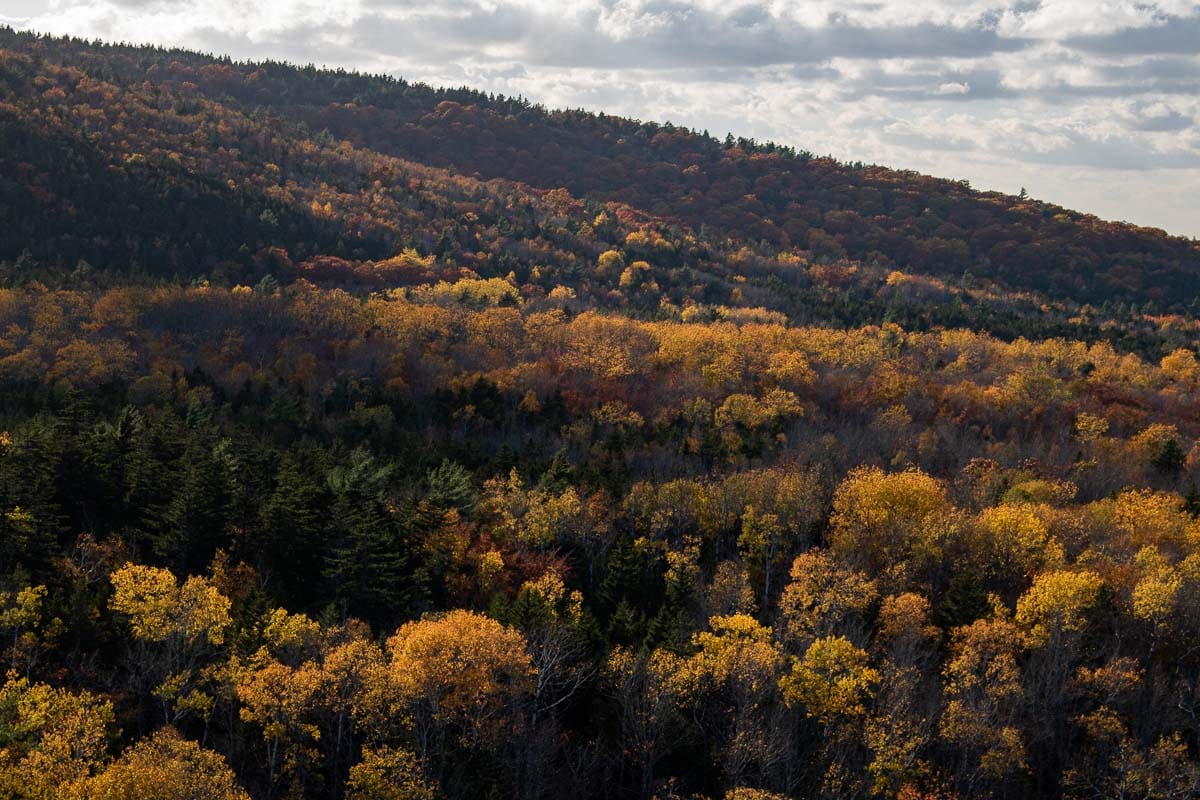
What Is the Best Time to See Fall Foliage in Acadia National Park?
There will be fall colors in Acadia National Park throughout the month of October. The peak fall foliage in Acadia is usually in mid-October, although this varies slightly from year to year.
You can see the up-to-date fall color status here on the Maine Foliage website, which is managed by the Maine government.
Track fall colors across the United States with this amazing fall foliage map!
What Are Some Unmissable Fall Activities in Acadia National Park?
Besides basking in the brilliant autumnal colors, there are several other things to do in Acadia National Park in the fall. Here’s a selection of fun autumn activities in the park:
- Watch the sunrise from the top of Cadillac Mountain;
- See the fall scenery at Jordan Pond from a canoe, kayak, or stand-up paddleboard;
- Enjoy the famous popovers at Jordan Pond House;
- Explore the park’s historic carriage roads by bicycle;
- Visit the Wild Gardens of Acadia;
- Hike to the summit of Pemetic Mountain for panoramic views;
- Experience the best of Acadia—views, fall foliage, lakes, trails, and carriage roads—on the Bubbles Nubble Loop;
- Go for a gorgeous coastal walk on the Ocean Path;
- Walk from Bar Harbor to Bar Island at low tide;
- Indulge in lobster rolls, pastas, and other dishes in Bar Harbor.
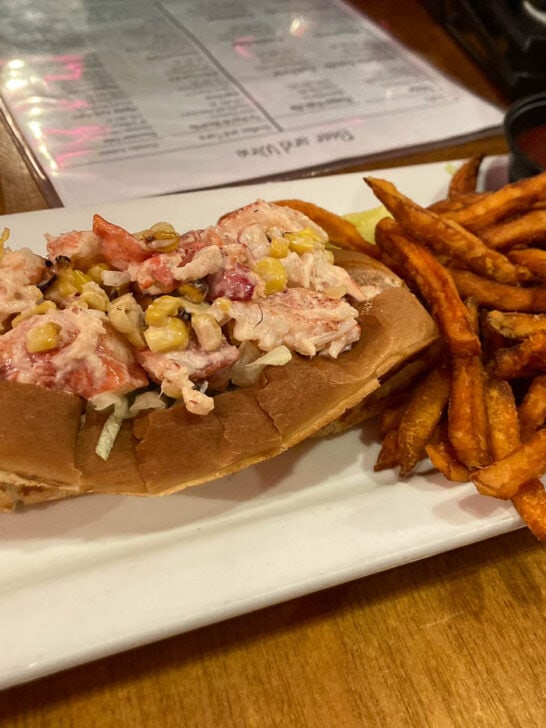

Where Should I Stay When Visiting Acadia National Park in the Fall?
There are no lodging options within Acadia National Park, but there are two national park campgrounds on Mount Desert Island.
If you’re not planning to camp, the single best place to stay near Acadia National Park is Bar Harbor.
This vibrant coastal community is located on the northeast shore of Mount Desert Island and is, quite literally, surrounded by Acadia National Park on all sides. It’s just a few minutes’ drive from the park, including the popular Park Loop Road and other attractions.
There are plenty of accommodation options in town, from affordable motels to B&Bs and high-end hotels.
Planning a trip to Acadia? See all available Bar Harbor accommodation options for your preferred dates here.
Additionally, Bar Harbor also has numerous locally owned shops, bars, and restaurants in its compact town center. It’s a delightfully walkable town with beautiful ocean views and beaches, too.
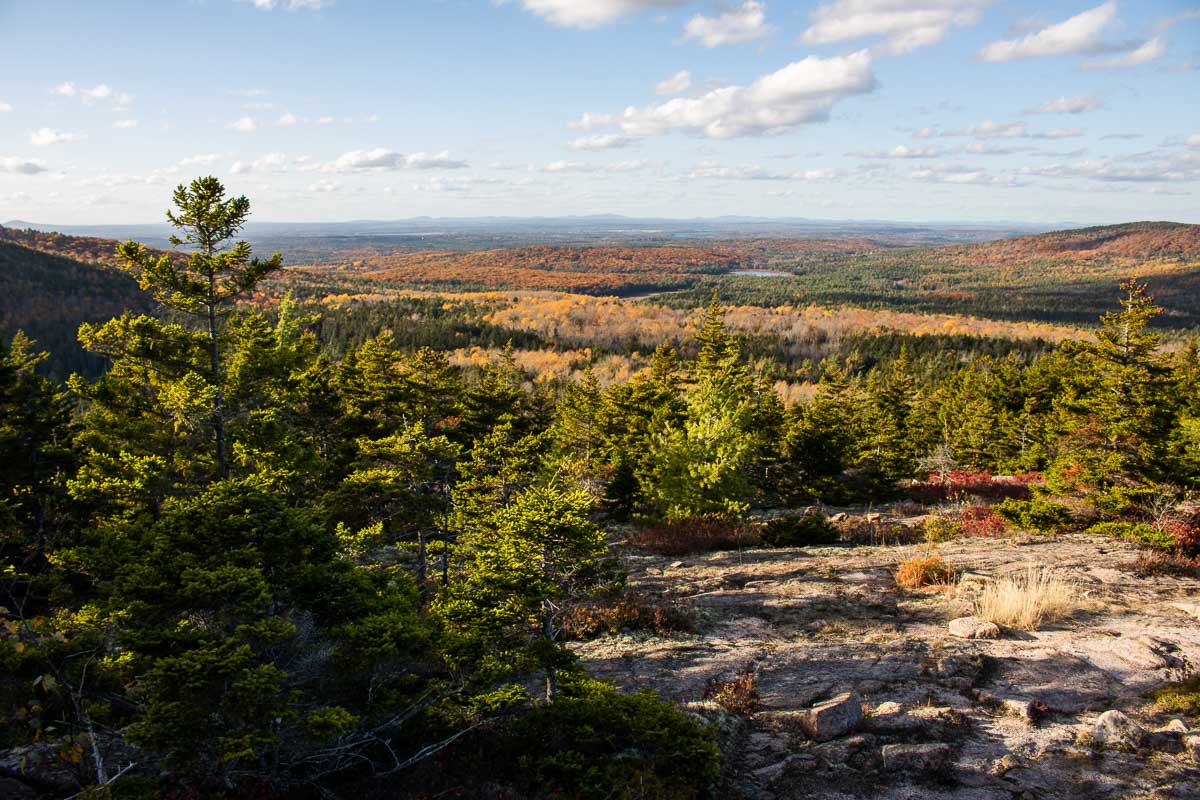
Is Acadia National Park Busy in the Fall?
Historically, by far the busiest months in Acadia National Park are July and August. June is the start of the peak season and can also be quite busy, while September, marking the end of the summer, also sees its fair share of visitors.
October is the fifth-busiest month in Acadia National Park on average. Although hundreds of thousands of people still visit Acadia National Park in October, it’s much less crowded than those four summer months.
You can see historical visitation data by month in this report from the National Park Service.
Even though the fall foliage spectacle is at its peak in October, school has started again, temperatures are lower, and there’s a good chance of rainfall,…
All of this means that visitation to Acadia National Park in October is still significant, but—perhaps surprisingly—not overwhelming or uncomfortable.
I spent a week in Acadia in mid-October and didn’t experience any issues with crowds or traffic. I always found a parking spot, trails weren’t overly crowded, and there were no traffic jams at all.
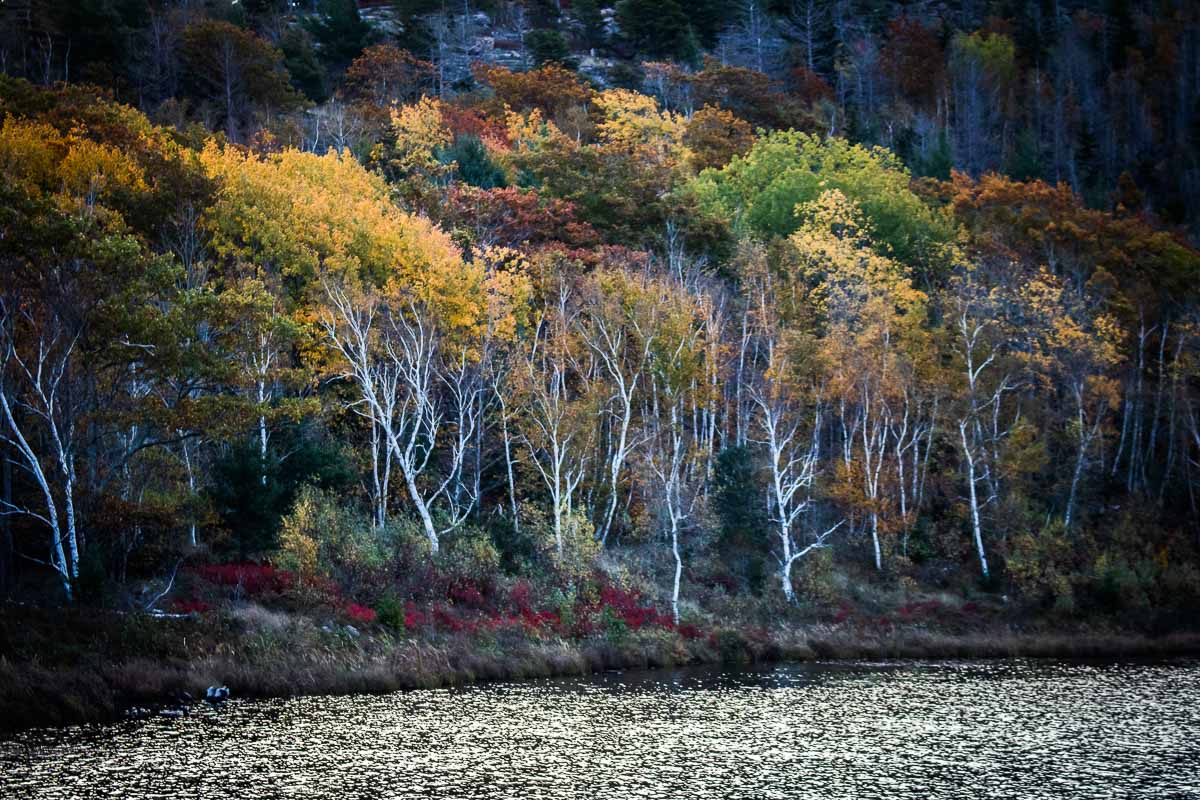
Can I Explore Acadia National Park With My Dog?
Yes, absolutely! Acadia National Park is one of the most dog-friendly national parks in the United States.
Unlike the vast majority of other national parks, Acadia allows dogs on most of its trails, as well as in many other areas.
For much more information, I recommend reading my comprehensive guide on visiting Acadia National Park with dogs.
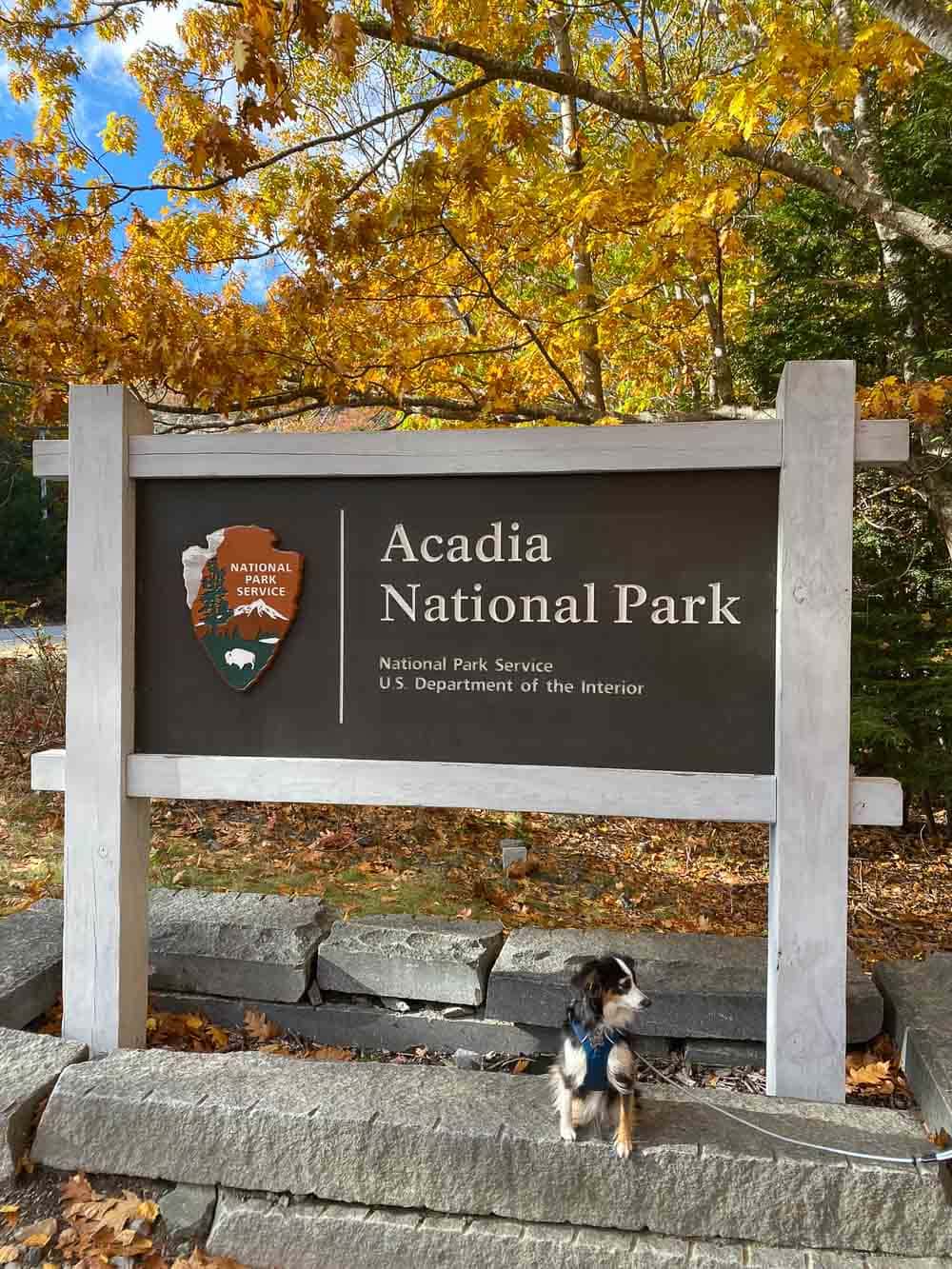
What Do I Need to Pack For My Fall Trip to Acadia?
Just like in many places across the United States, the weather in Acadia National Park can be unpredictable in the fall. It’s possible to have a week of gloriously sunny weather, but you might also have the misfortune of getting several days of rain.
Therefore, it’s important to prepare for all kinds of weather when visiting Acadia National Park in the fall. Here’s a list of essential items to pack for your fall visit to Acadia:
- Hiking boots;
- Shorts and long pants (for hiking);
- T-shirts and sweaters (for hiking);
- Warm jacket (for chilly mornings and evenings);
- Rain jacket (for rainy days);
- Sunglasses and sunscreen (for sunny days);
- Camera, tripod, and lenses (for fall photography);
- Regular shoes and clothes (for strolls, food, and drinks in Bar Harbor).
More About Acadia National Park
- Park Website
- Travel Guide
- Topographic Map
- Best Acadia Hikes
- Top Things To Do in Acadia National Park
- Best Viewpoints
- Accommodation
7 Best Places to See Fall Foliage in Acadia National Park
There are many places where you can enjoy the gorgeous fall colors within Acadia National Park. These are my favorite areas for autumn foliage in the park.
1. Fall Landscapes on the Park Loop Road
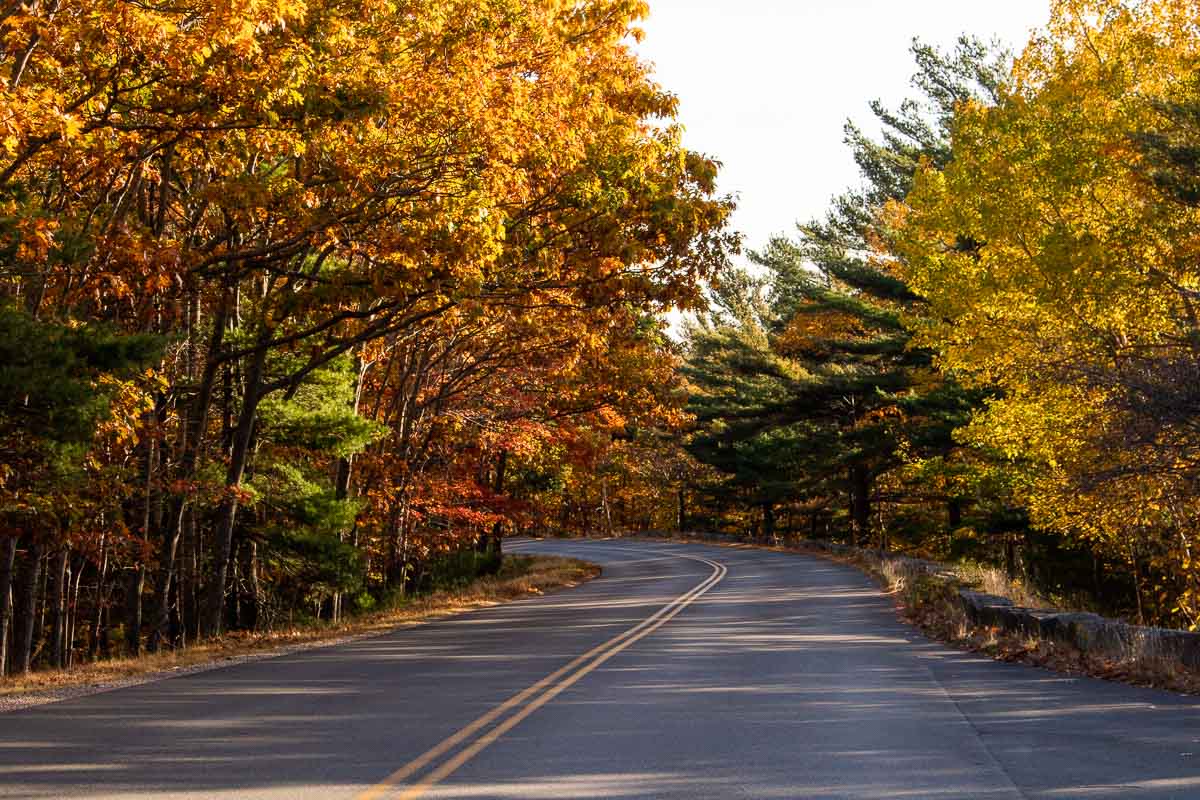
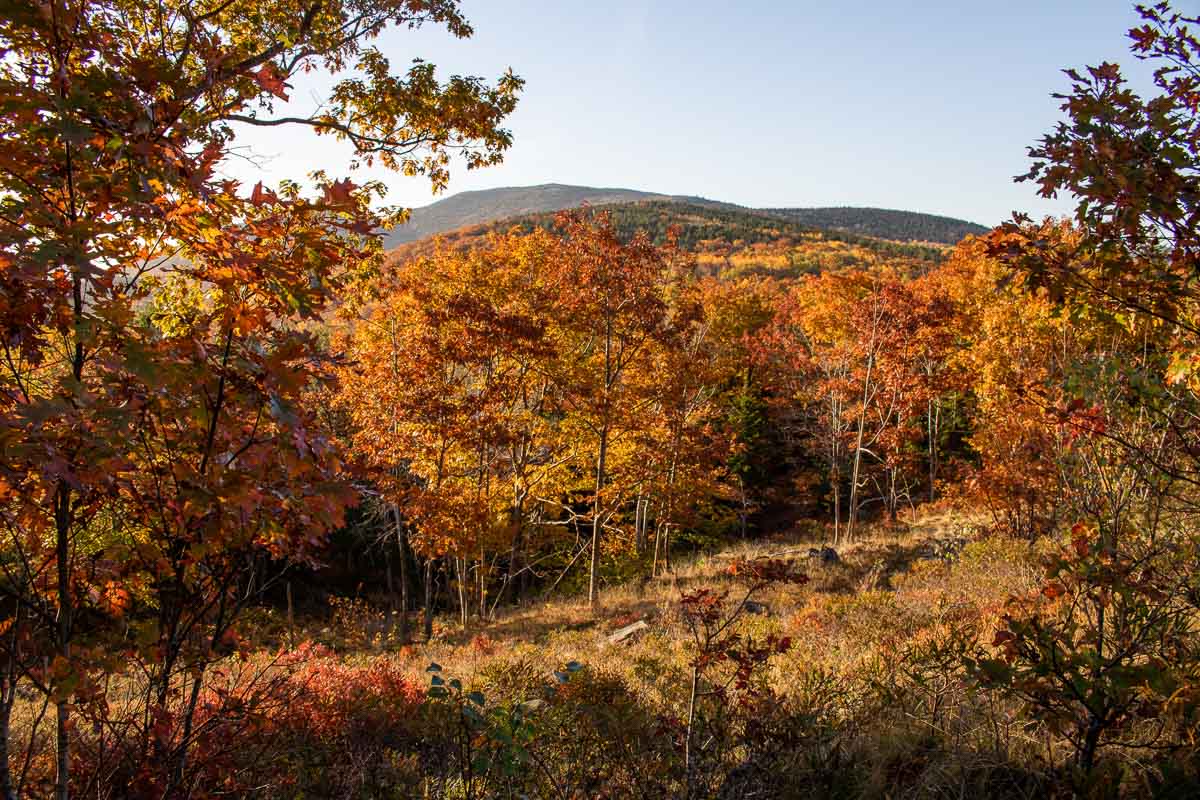
One of the finest roads in the National Park System, Acadia’s Park Loop Road winds past lakes and mountains, through forests, and along the park’s spectacular shoreline.
This 27-mile scenic drive is nothing short of phenomenal in the fall, lined with amazing Acadia National Park views, picnic areas, and trailheads.
Many of the park’s most famous attractions are along this road as well, including several of the best places to see the fall colors in Acadia National Park below.
Cadillac Mountain, Sieur de Monts, Jordan Pond, and the Bubbles are just a few autumn highlights on the Park Loop Road.
To drive the entirety of this scenic drive, start at the Hulls Cove Visitor Center to the northwest of Bar Harbor.
Alternatively, you can also enter the Park Loop Road at the Cadillac Mountain Entrance—the closest entrance to Bar Harbor—, via the Sieur de Monts Entrance, or via the Stanley Brook Entrance at Seal Harbor in the south.
2. Fall Views from Cadillac Mountain Summit

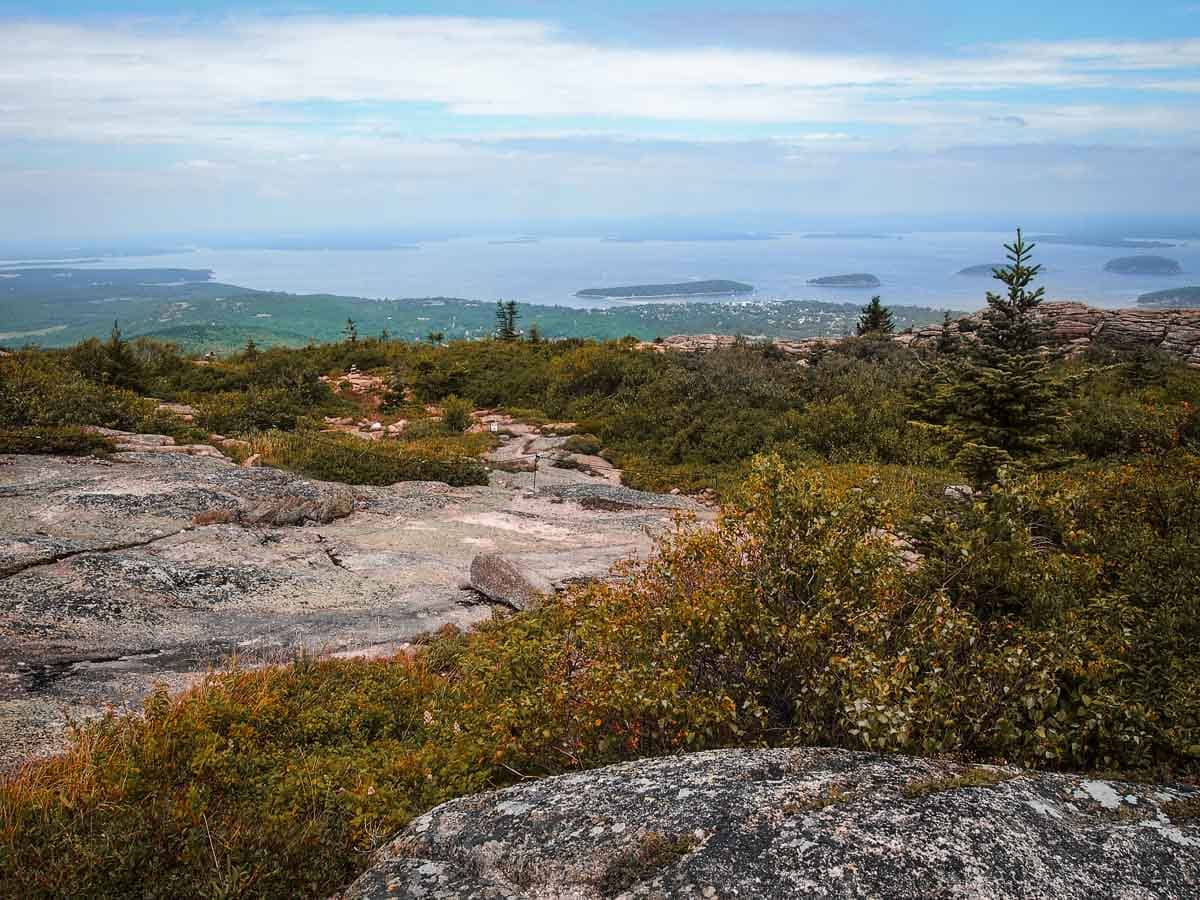
The highest mountain in Acadia National Park and on the entire eastern seaboard of the United States, Cadillac Mountain is the most popular destination in the park.
You can get to the summit via a spur road from the Park Loop Road or, if you’re up for it, via a few hiking trails. If you’re planning on hiking to the top, I recommend the Cadillac South Ridge Trail, a beautiful 7.1-mile roundtrip hike.
One of the reasons Cadillac Mountain is so popular is the fact that it’s the first place in the entire United States where you can see the sunrise.
This unique event takes place from October 7 to March 6 every year, which includes, of course, the peak of fall foliage in Acadia National Park.
From the summit, you can admire a magnificent 360-degree view of Mount Desert Island, Bar Harbor, Frenchman Bay, and the Porcupine Islands.
Read more about visiting Cadillac Mountain, including possible reservation requirements, here on the park’s website.
3. Fall Colors at Sieur de Monts
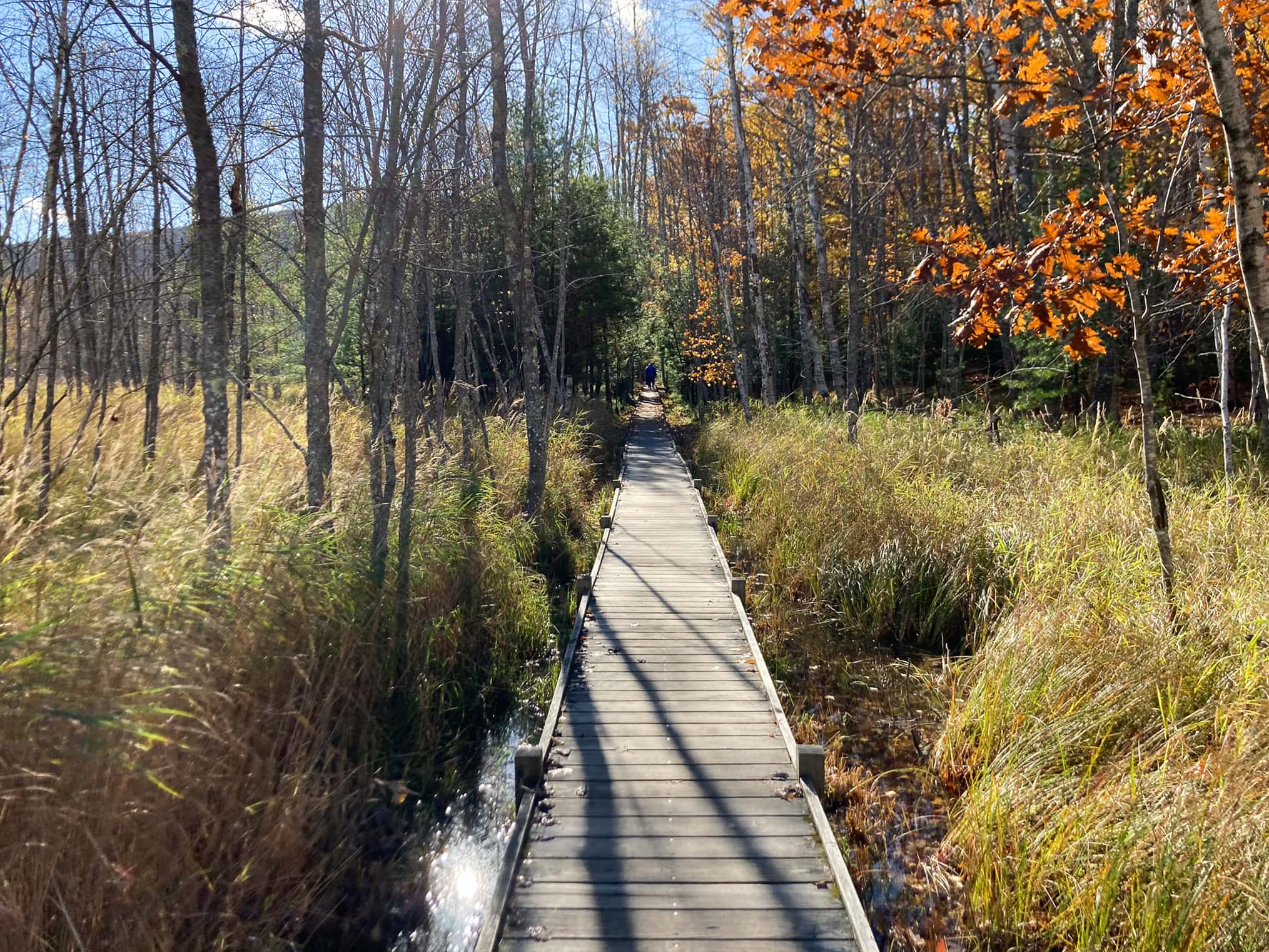
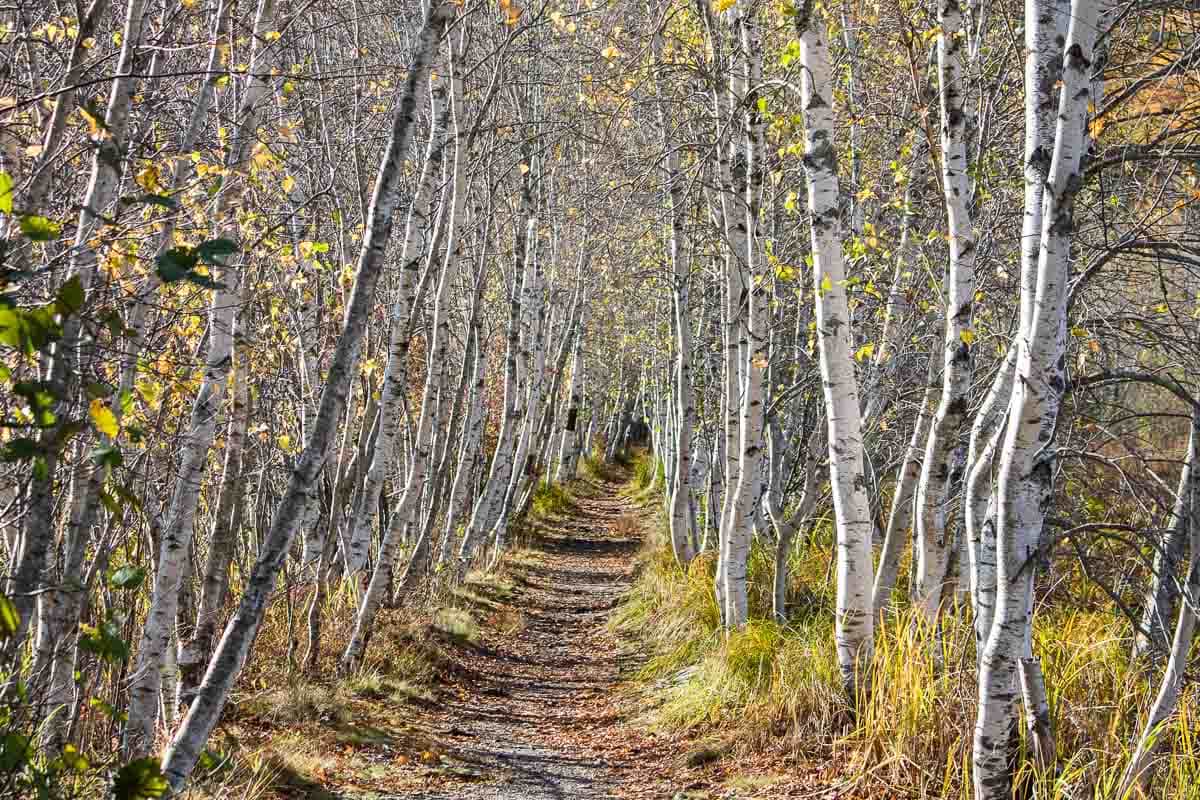
Sieur de Monts is the first main stop on the one-way section of the Park Loop Road, which is basically the entire eastern portion of the road.
Sometimes called the “Heart of Acadia,” Sieur de Monts is a beautiful area that comprises Sieur de Monts Spring, the Nature Center, the Wild Gardens of Acadia, several trails, and the Great Meadows Wetland (see below).
A particularly scenic area at Sieur de Months, especially in the fall, is the Jesup Path and Hemlock Path Loop. These two trails form a figure-8 loop that runs from the Wild Gardens of Acadia to the Great Meadow Wetland and back.
On the way, you’ll walk through beautiful stands of hemlock and white birch, the latter of which display gorgeous yellow foliage in the fall, while Dorr Mountain is occasionally visible as well.
It’s a 1.5-mile roundtrip hike that’s great for families, kids, and pets. Both trails are wheelchair-accessible, too.
If you’re looking for easy fall hikes in Acadia National Park, you can’t go wrong with the Jesup Path and Hemlock Path Loop. It’s arguably the most underrated hike in the park.
4. Fall Reflections at the Great Meadow Wetland
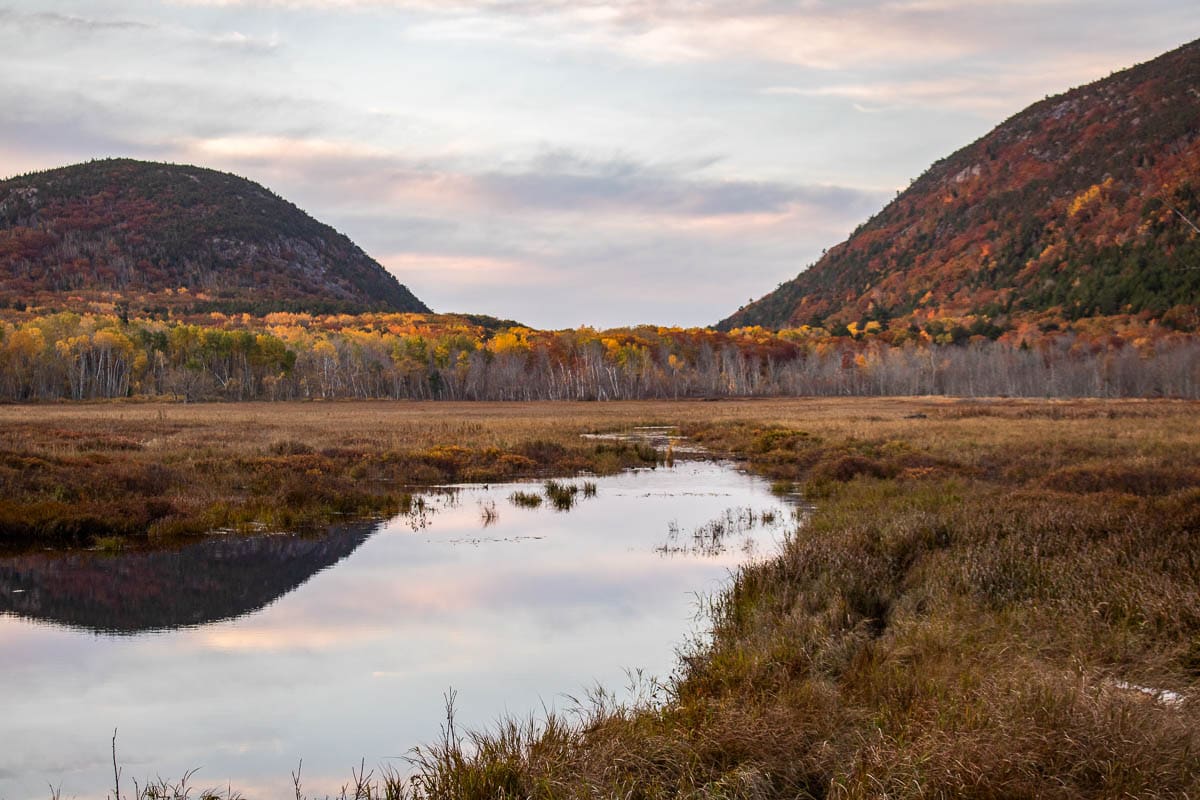
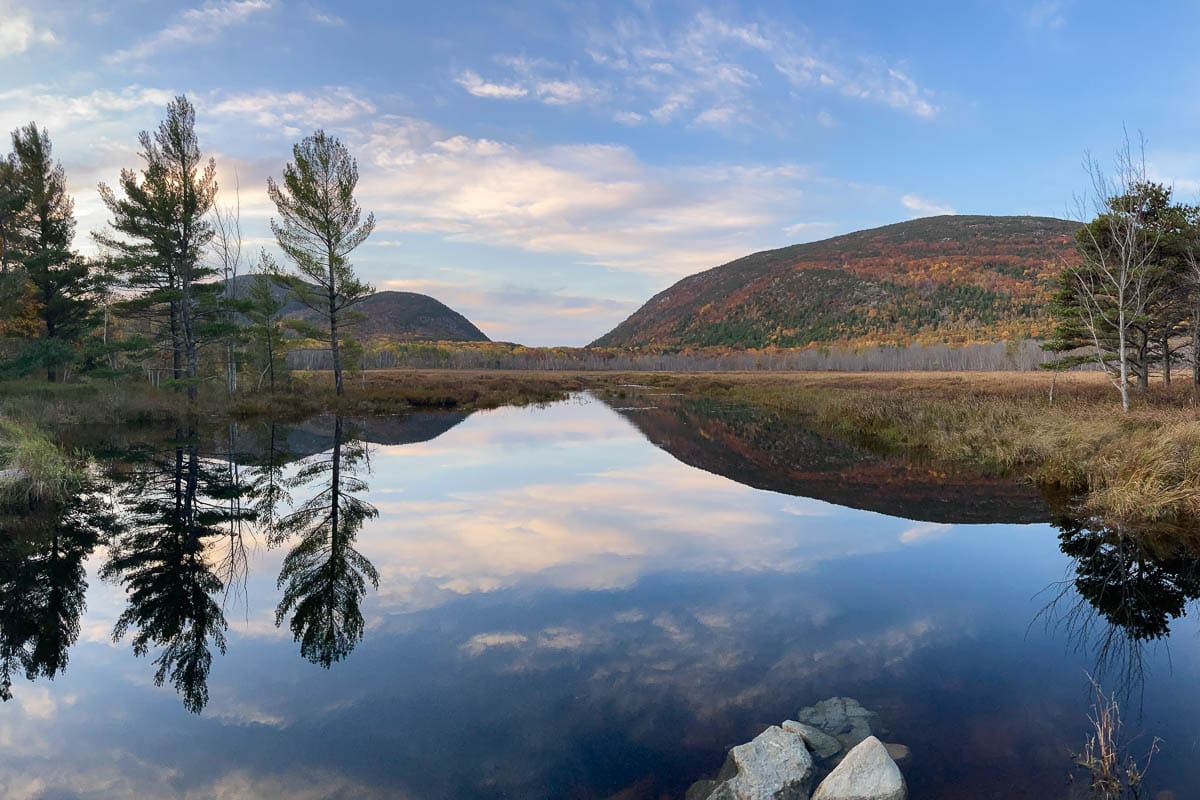
Sandwiched between Sieur de Monts and the Park Loop Road, the Great Meadow Wetland is one of Acadia’s less-known areas.
Many motorists simply drive by it on their way to more famous places in the park. Yet, it’s still a very worthwhile stop—I’d argue it’s the first main stop—on the Park Loop Road, if only because of the superb view.
There’s no official parking lot here, though, except for a small roadside pullout where Cromwell Brook flows under the Park Loop Road.
The Great Meadow Wetland lies at the base of Dorr Mountain, which dominates the background. The mountain was named after George B. Dorr, the founder of Acadia National Park who “focused much of his attention on this area and greatly modified it, adding greenhouses, trails and roads,” the National Park Service says.
The view of the Great Meadow Wetland is especially beautiful in the fall, when fall foliage covers the flanks of Dorr Mountain, reflected perfectly in the still water.
You can also clearly see the colorful birch trees along the base of the mountain—that’s where the above-mentioned Jesup Path and Hemlock Path Loop is.
This is one of my favorite places for fall colors in Acadia National Park, mainly because it’s so underrated, quiet, and photogenic. An underappreciated gem, for sure.
TIP: If you can, I highly recommend visiting the Great Meadow Wetland at sunrise. While sunrise at Cadillac Mountain gets all the attention, this is also a gorgeous—and above all peaceful—spot to watch the park wake up. Morning reflections in the water are stunning, there’s an excellent chance of seeing wildlife, and you’ll most likely be all by yourself.
5. Fall Hike on the Bubbles Nubble Loop
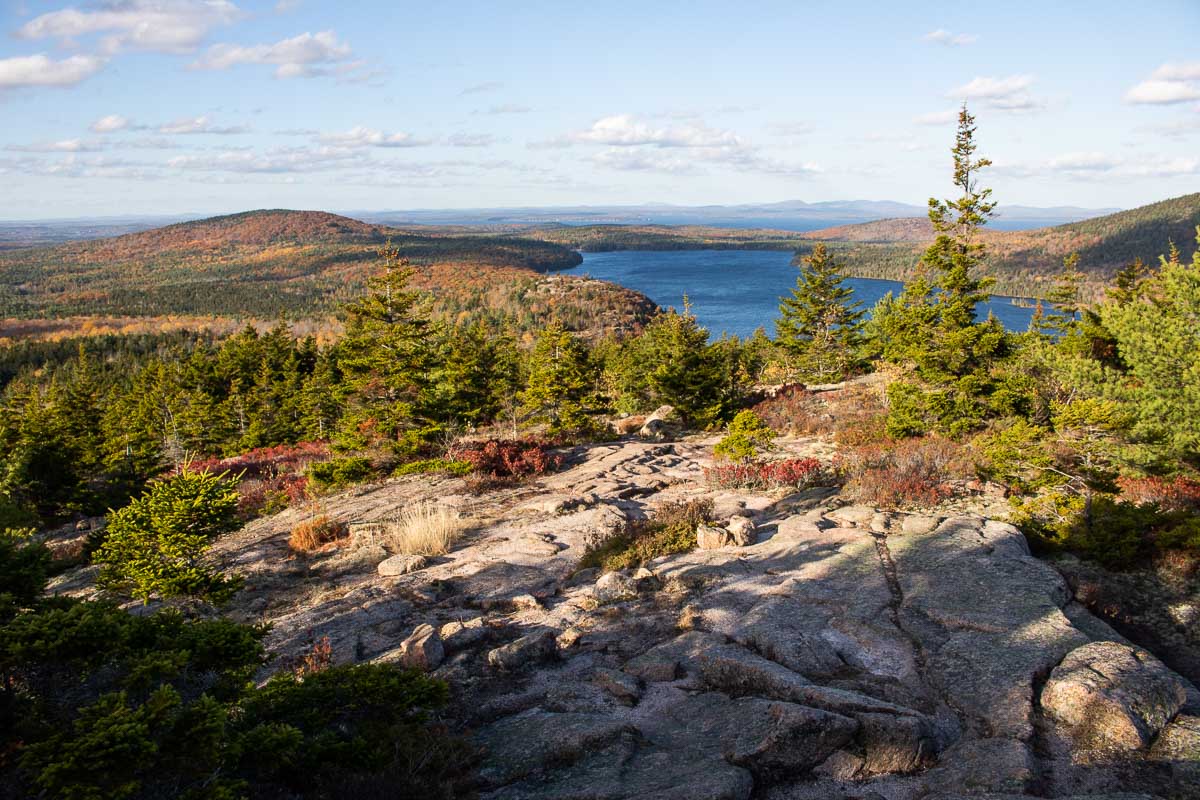
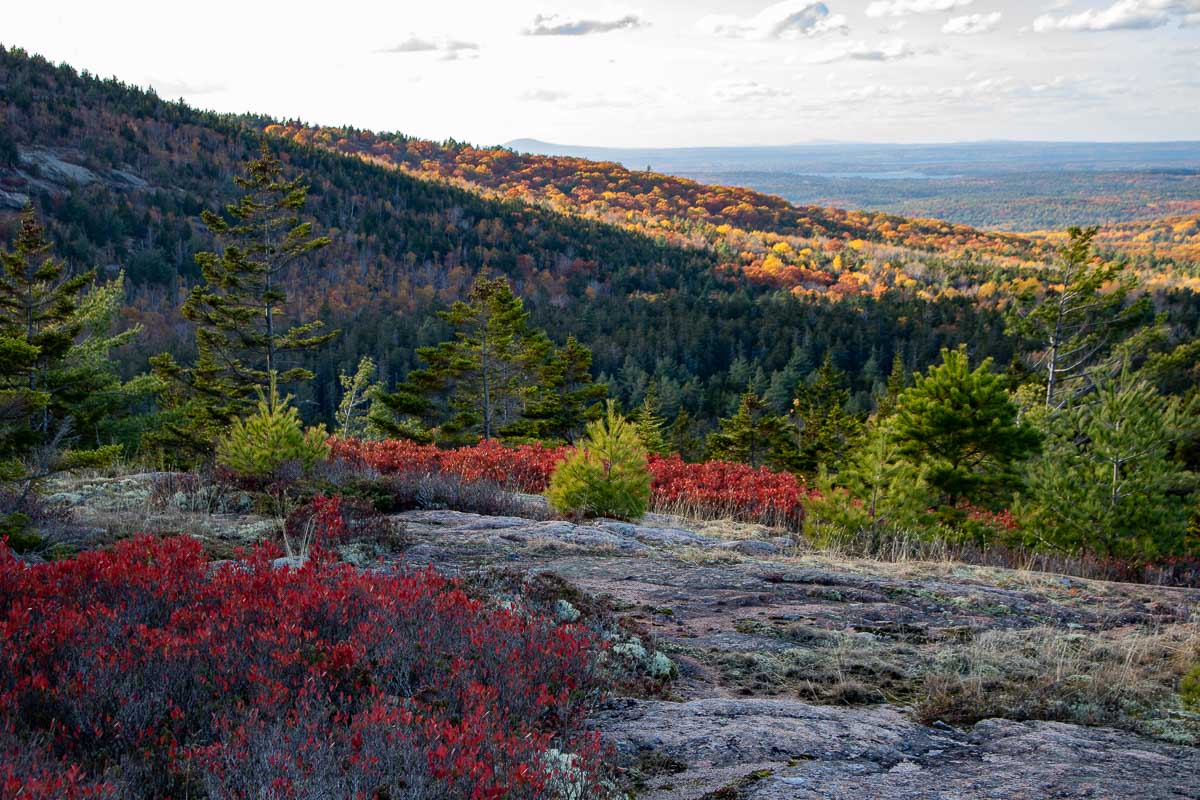
Without question one of the best fall hikes in Acadia National Park, the Bubbles Nubble Loop features everything the park is famous for.
There are lake views, beautiful forests, amazing fall colors, granite ridges, and geological formations. This fantastic loop hike is a combination of the Bubbles Divide Trail, the Bubbles Trail, and carriage roads.
As its name suggests, the Bubbles Divide Trail provides access to both North Bubble and South Bubble, the famous mountain that’s visible from across Jordan Pond, as well as iconic Bubble Rock, which balances precariously on the edge of a cliff.
The views are amazing here, taking Jordan Pond, the Cranberry Isles, and surrounding mountains like Pemetic and Sargent.
From the Bubbles, you can continue your hike to the north and towards Eagle Lake.
From North Bubble, much of the Bubbles Nubble Loop trail traverses open ridges and barren summits, offering exceptional views of the autumn landscapes of central Mount Desert Island.
I personally loved this part of Acadia National Park, simply because it’s much less crowded and there’s the undeniable feeling of being alone in the wilderness, immersed in a glorious fall wonderland.
The trail also takes you to Conners Nubble, which provides a superb view of Eagle Lake below—hence the name Bubbles Nubble Loop, which is a fantastic 2.6-mile roundtrip day hike.
Additionally, you’ll walk a section of carriage roads back to the trailhead for the ultimate Acadia National Park experience.
6. Fall Foliage at Jordan Pond
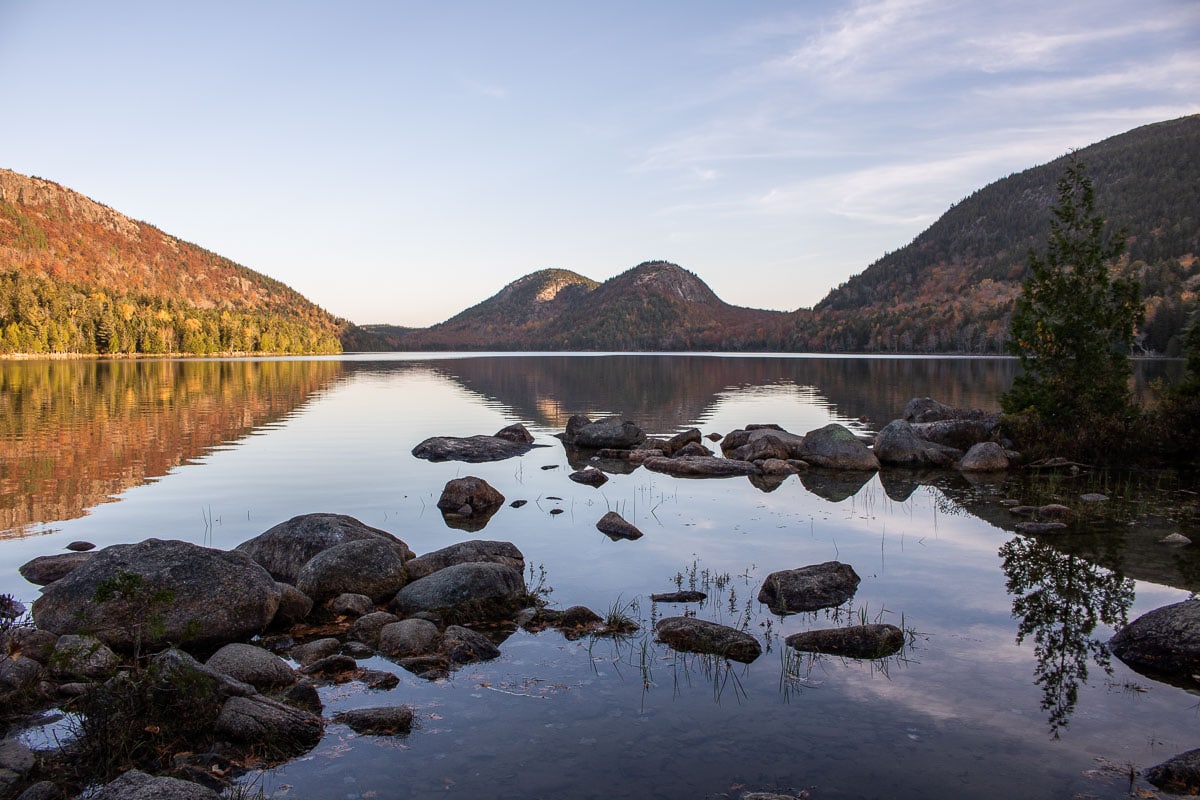
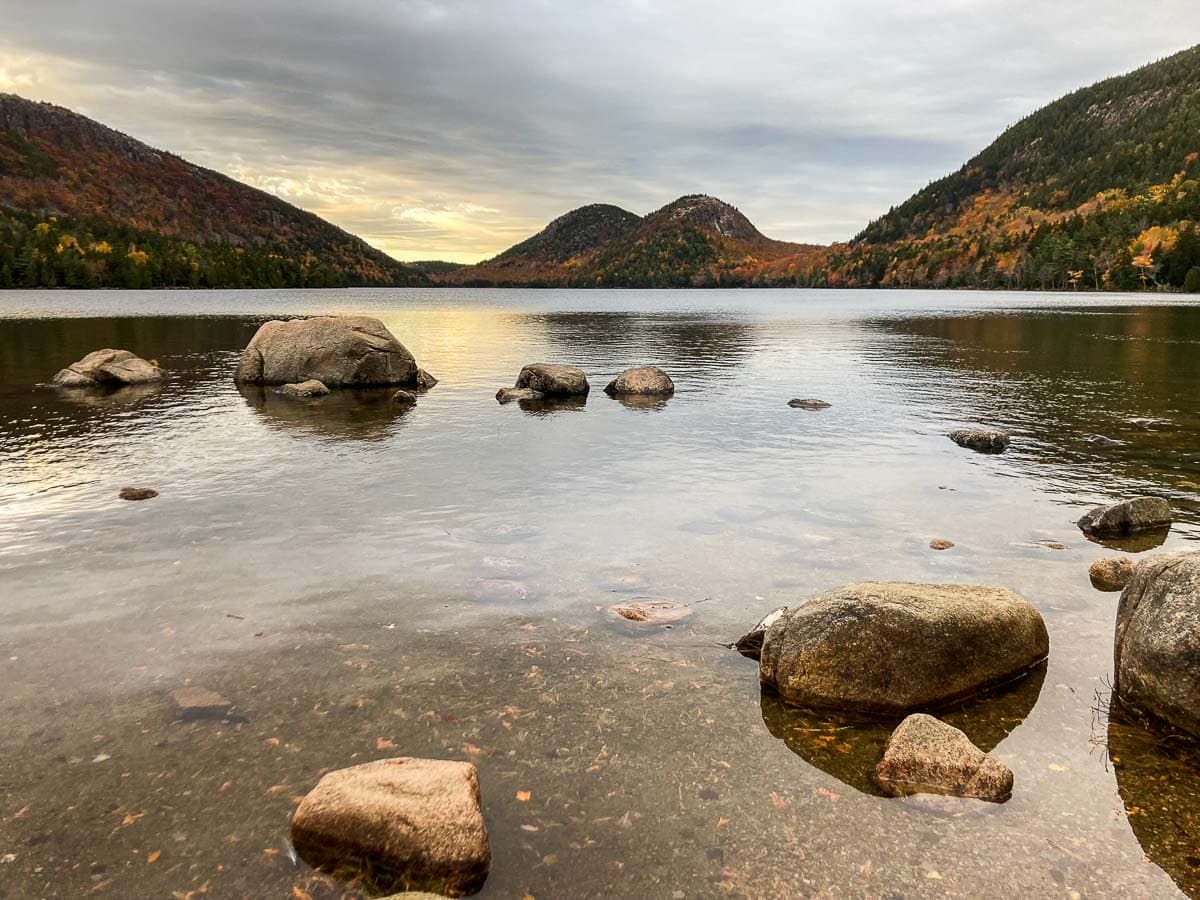
Popular Jordan Pond is an unmissable place to admire the fall colors in Acadia. In fact, this is easily one of the most iconic views in the entire park.
Located along the Park Loop Road, this shimmering lake sits in a steep valley carved out by retreating glaciers.
Several prominent mountains surround the lake, namely Penobscot Mountain, Cadillac Mountain, and the famed Bubbles. The latter are visible across the lake from the lakeshore near Jordan Pond House, one of the most photographed views in the national park.
The wonderful and easy 3.3-mile Jordan Pond Path loops around the lake, offering beautiful views and fall scenery on the way.
Jordan Pond is one of the park’s busiest areas, though, so I recommend getting there early in the morning.
At dawn, there’s usually a perfect reflection of the mountains and lakeshore fall foliage in the water. Additionally, this is the best time to see wildlife here, too. Watch for common loons, peregrine falcons, and beavers.
7. Fall Scenery on the Carriage Roads
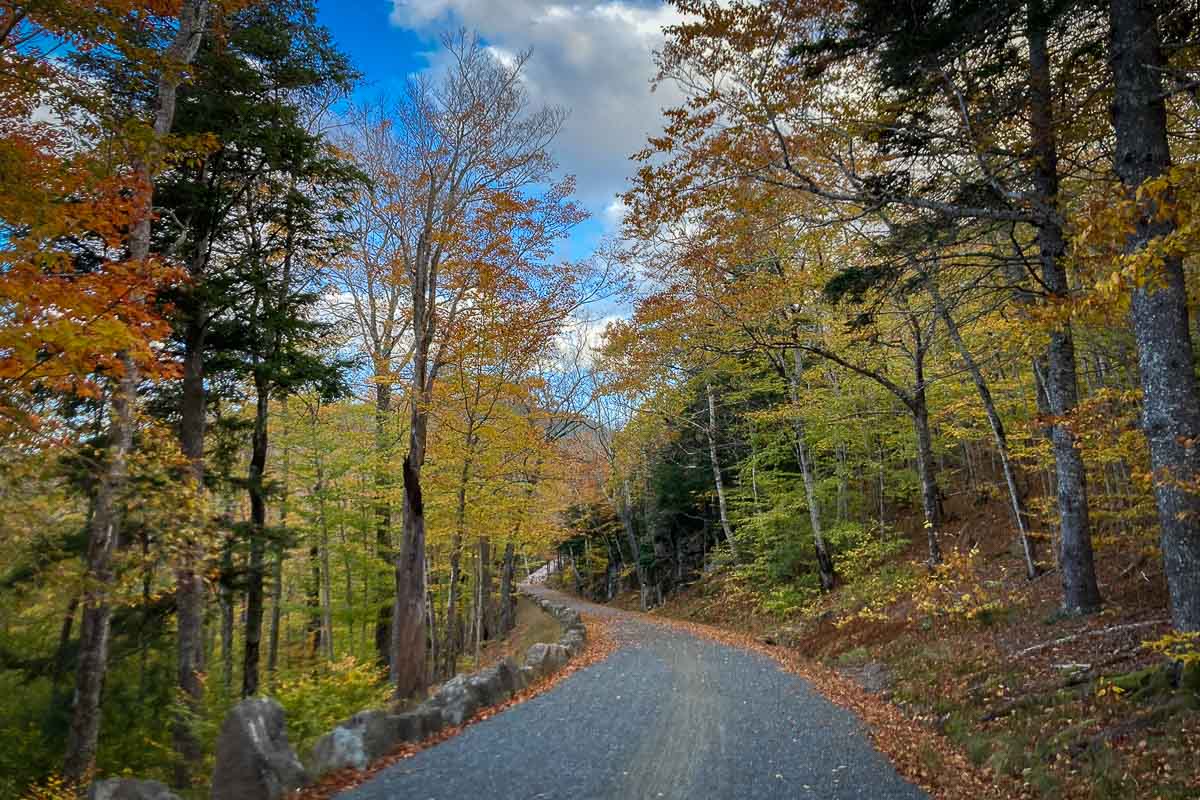
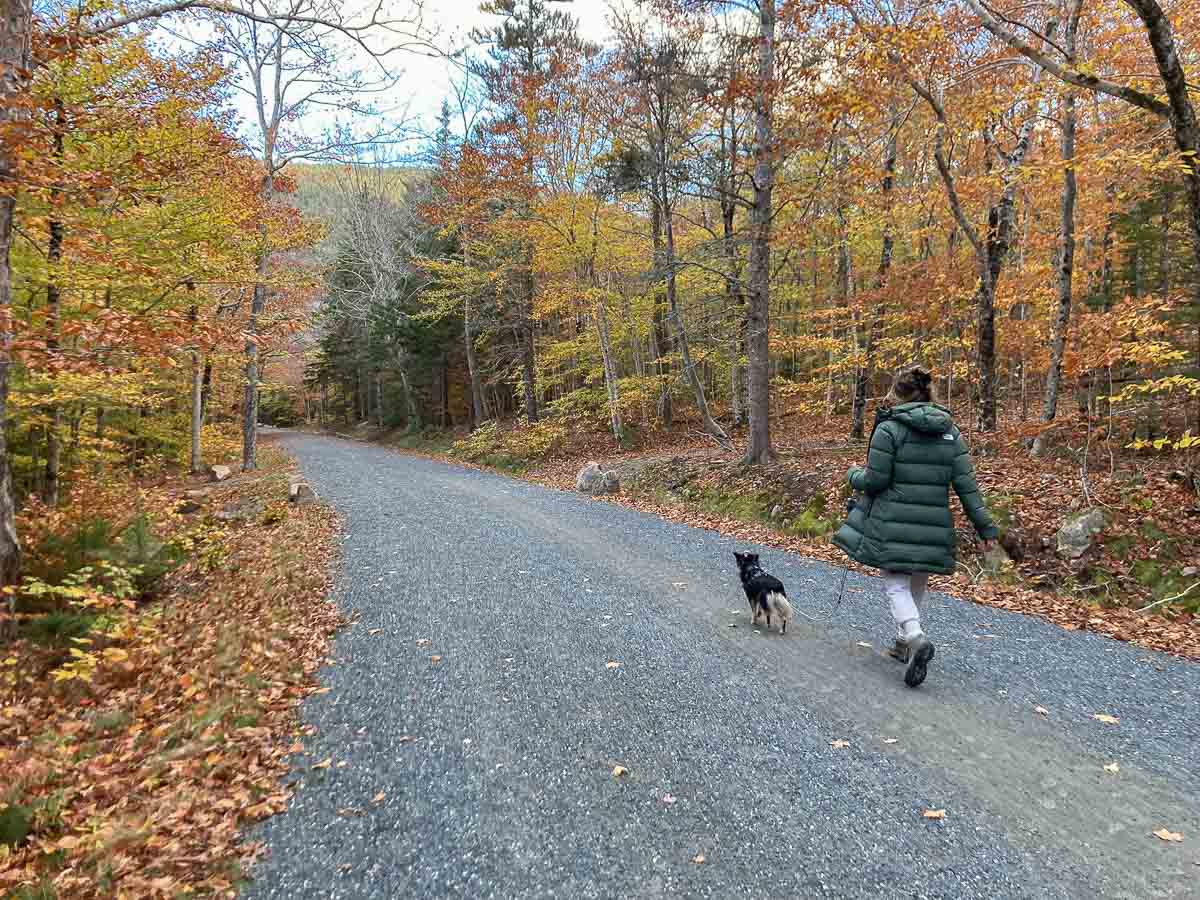
Forty-five miles of historic carriage roads run through the forests, across the slopes, and along the ocean shores of Acadia National Park.
This extensive and interconnected network of unpaved roads provides endless opportunities to enjoy the stunning fall colors in Acadia National Park. All carriage roads are open to pets, as well as bicycles and horses.
Popular Acadia National Park carriage road loops, which are amazing both on a bicycle and on foot, include the following:
- Hulls Cove to Paradise Hill, Witch Hole Pond, and Duck Brook Bridge (4.7 miles, loop)
- Day Mountain Loop (5.3 miles, loop)
- Jordan Pond to the Stanley Brook, Cobblestone, and Jordan Pond Bridges (3.1 miles, loop)
- Eagle Lake Loop (5.9 miles, loop)
- Hadlock Loop (4.2 miles, loop)
Additionally, many carriage roads intersect with hiking trails, too, offering even more possibilities to explore Acadia National Park on foot.
Combine them to “create a loop, add distance, or provide opportunities for more even terrain to gain or lose elevation,” the National Park Service suggests.
Map of the Best Locations for Fall Colors in Acadia National Park
